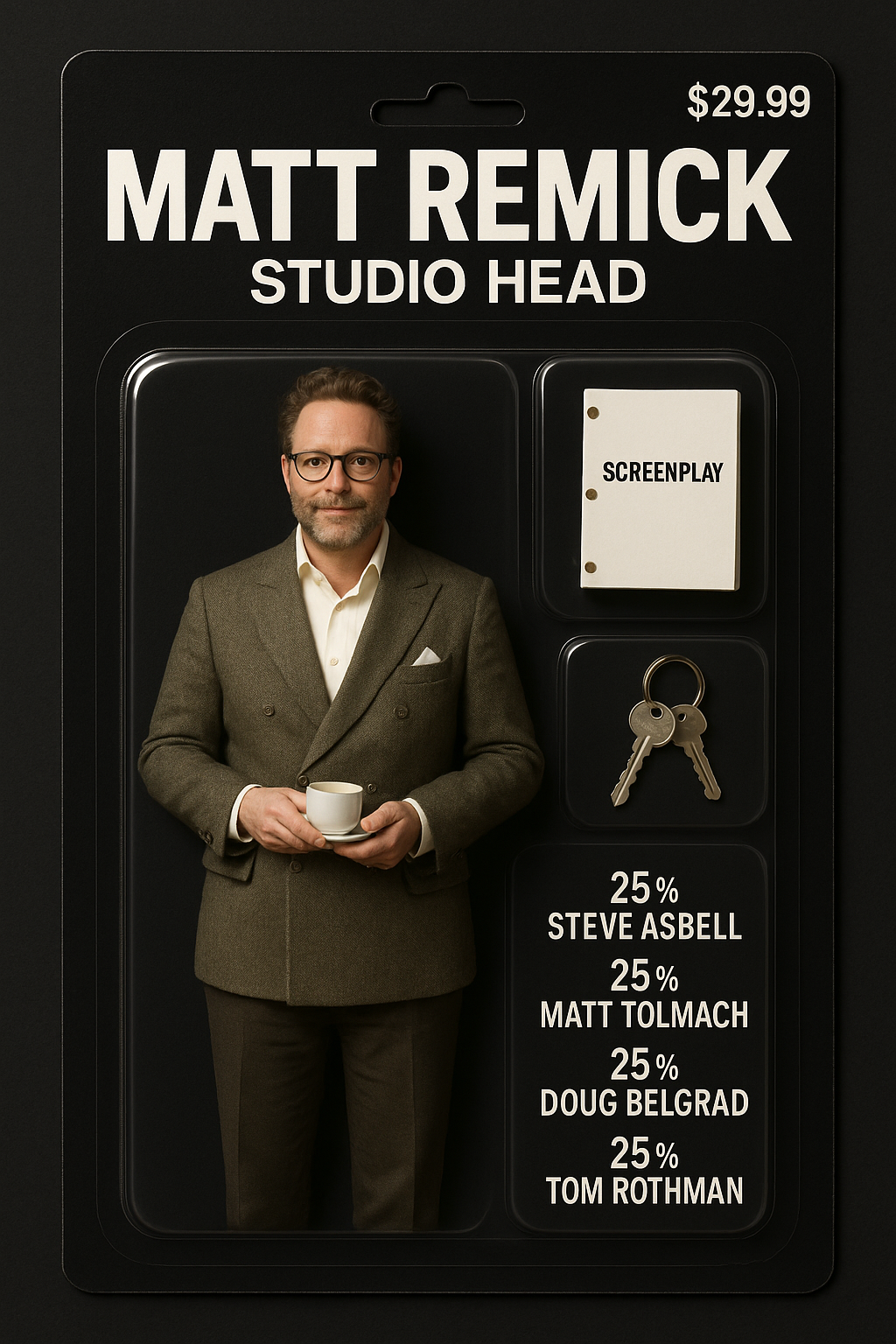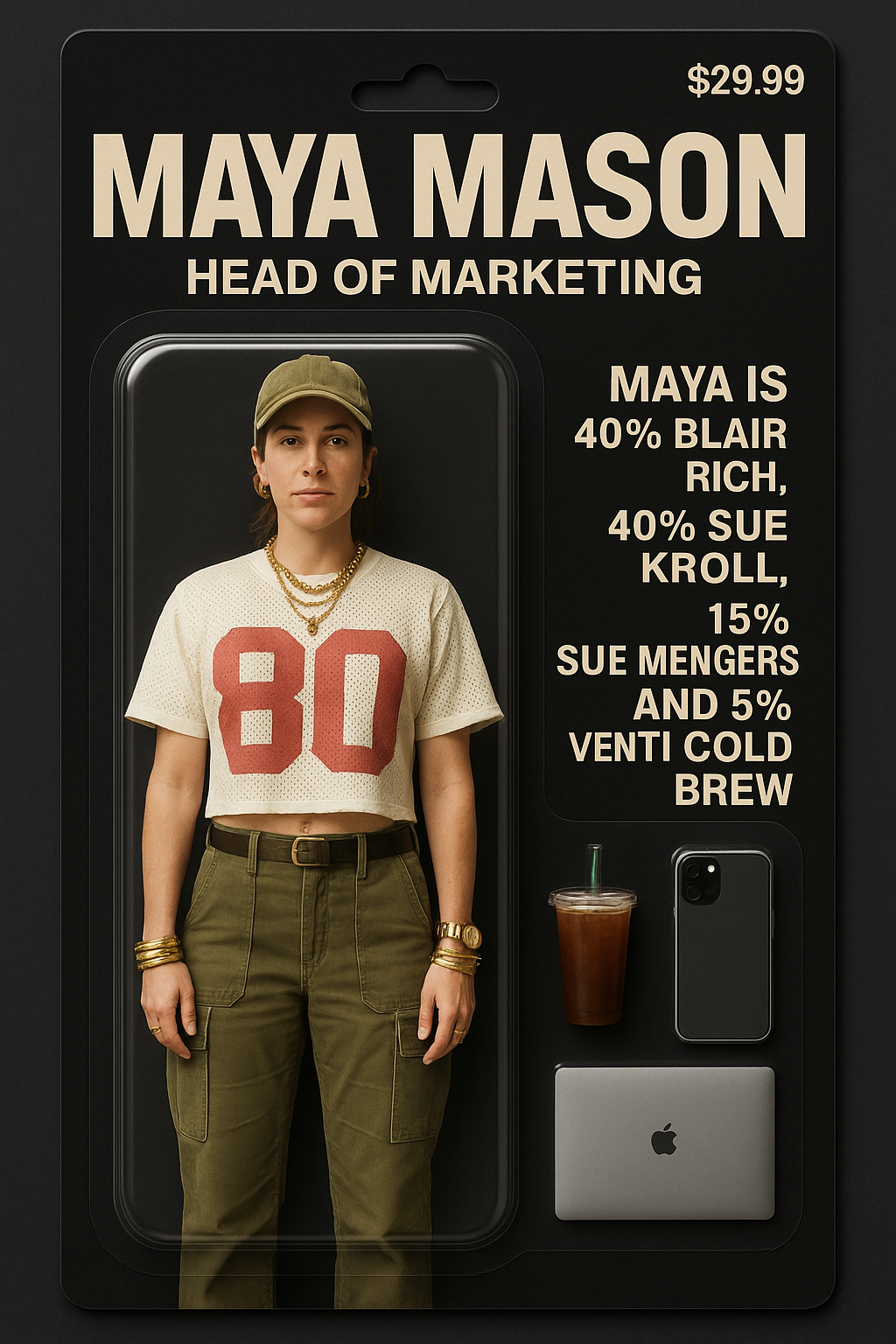Who’s Really Who on The Studio? A Sharp-Edged Look at Hollywood's Most Meta Satire
Apple TV+
Seth Rogen’s Apple TV+ comedy doesn’t just satirize Hollywood—it dissects its very structure. The Cinema Group investigates the creative blueprints behind each major character.
In Los Angeles, where media professionals are accustomed to seeing fictionalized versions of themselves onscreen, The Studio lands with uncommon precision. Co-created by Seth Rogen and Evan Goldberg, the series functions as both a biting workplace satire and a meta-critique of contemporary entertainment culture. The narrative follows Matt Remick, a midlevel executive at the fictional Continental Films, who is abruptly promoted to studio head. What ensues is a chaotic blend of algorithmic analysis, reboots, and escalating stakeholder anxiety.
What distinguishes The Studio from similar fare is not just its self-awareness, but the specificity with which it constructs its characters. Each role is a carefully drawn caricature that unmistakably echoes real-world figures in the industry—many of whom are likely tuning in with equal parts amusement and concern.
Here is our comprehensive analysis of the show’s central Players and the Real life industry personas that they’re likely Based on them.
Matt Remick (Seth Rogen)
Graphic by The Cinema Group
Suggested Inspirations: Matt Tolmach, Doug Belgrad, Steve Asbell, Tom Rothman
Matt Remick represents the modern studio executive caught between artistic integrity and business imperatives. A reluctant authority figure, he personifies the tension between creative ambition and shareholder value. Rogen has characterized the role as semi-autobiographical, reflecting his own challenges in navigating corporate Hollywood.
Matt Tolmach and Doug Belgrad, who collaborated with Rogen during his Green Hornet tenure at Sony, serve as probable templates. Yet, the clearest analogue is Steve Asbell of 20th Century Studios, whose remark to Rogen (“I got into this because I love movies, and now it’s my job to ruin them”) encapsulates the internal conflict driving the character. Tom Rothman's assertive leadership style and self-deprecating bravado also color Remick's persona.
The Cinema Group Cut:
Matt is the kind of executive who would shelve an indie drama over data concerns, then mourn its cancellation after rewatching Her on an overnight flight.
Sal Saperstein (Ike Barinholtz)
Graphic by The Cinema Group
Suggested Inspirations: Composite of middle-management execs, particularly those in development
Sal Saperstein is an embodiment of development chaos. With frenetic energy and a tenuous grasp of storytelling, he reflects the type of executive who traffics in jargon and trends. According to Barinholtz, the character is a synthesis of various real-life figures—individuals who conflate superficial industry knowledge with decision-making authority.
He is instantly recognizable to insiders as the executive who elevates style over substance, eager to greenlight the next viral franchise without understanding its narrative mechanics.
The Cinema Group Cut:
He once seriously proposed rebooting a nostalgic children’s toy line as a post-apocalyptic thriller.
Maya Mason (Kathryn Hahn)
Graphic by The Cinema Group
Suggested Inspirations: Blair Rich, Sue Kroll, Sue Mengers
Maya Mason is a potent amalgam of some of Hollywood's most influential marketing leaders. With her erratic brilliance and passion for optics, Maya oscillates between strategic genius and emotional volatility. Kathryn Hahn delivers the character with both theatricality and nuance.
Blair Rich’s mastery of theatrical campaigns and Sue Kroll’s award-season expertise are clear reference points. Additionally, Maya’s flair for the dramatic draws upon the legend of Sue Mengers, whose unapologetic style and celebrity alliances made her an industry icon.
The Cinema Group Cut:
She could persuade a studio to spend $5 million re-editing a teaser trailer, citing “gut feeling” as her rationale.
Quinn Hackett (Chase Sui Wonders)
Graphic by The Cinema Group
Suggested Inspirations: Hannah Minghella, Courtenay Valenti, Brian Chapek, and the broader nepo baby demographic
Quinn Hackett is a product of Hollywood legacy, exemplifying the new class of executives elevated through familial privilege rather than field experience. Her role captures a generational shift where inherited access often substitutes for earned expertise.
Wonders has acknowledged Quinn’s nepo-baby status, which aligns with figures such as Hannah Minghella and Courtenay Valenti—individuals whose surnames carry professional capital. Her character typifies a boardroom presence that is performative rather than participatory.
The Cinema Group Cut:
Quinn’s idea of development rigor involves quoting Sofia Coppola and suggesting mood boards curated from Instagram.
Griffin Mill (Bryan Cranston)
Graphic by The Cinema Group
Suggested Inspirations: David Zaslav, Michael Lynton, Bob Evans
Griffin Mill is the quintessential studio patriarch, commanding both fear and fascination. With his elitist attire and strategic cruelty, Mill embodies the contradictions of contemporary media consolidation.
David Zaslav, whose tenure at Warner Bros. Discovery has been marked by drastic content restructuring, serves as a principal model. Michael Lynton’s executive formality and Bob Evans’ flamboyant legacy also contribute to this richly drawn figure.
The Cinema Group Cut:
Griffin greenlights projects not based on cultural relevance, but on whether the deck font feels "prestige."
Patty Leigh (Catherine O’Hara)
Graphic by The Cinema Group
Suggested Inspirations: Amy Pascal, Jen Salke
Patty Leigh is a throwback to a bygone era of intuitive studio leadership. Her combination of empathy, unpredictability, and cinematic passion makes her both inspirational and erratic.
Amy Pascal, known for her emotional intelligence and spontaneous instincts, is the confirmed reference point. Elements of Jen Salke’s Prime Video leadership style—balancing mainstream appeal with high-concept risks—are also evident in Patty’s characterization.
The Cinema Group Cut:
She once commissioned an entire writer’s room based on a dream she had after watching Working Girl.
Continental Studios (The Studio Itself)
Apple TV+
Suggested Inspirations: Sony Pictures, Paramount Pictures, Universal Studios
In The Studio, Continental Studios serves as more than just a backdrop; it embodies the legacy and challenges of traditional Hollywood institutions. The studio’s portrayal reflects characteristics of major film studios like Sony, Paramount, and Universal, known for their storied histories and adaptations in the evolving entertainment landscape.
Visually, the headquarters of Continental Studios is depicted as a 1927 Frank Lloyd Wright design in his signature Mayan Revival style, described in the show as a “temple of cinema.” However, this building is a fictional creation. The exterior was crafted using a digital façade over the Warner Bros. Television building in Burbank, California, while the interiors were constructed on Stage 16 at the same studio lot. The design draws inspiration from Wright’s iconic structures like the Ennis House, integrating elements that evoke a sense of grandeur and historical significance.
This architectural choice underscores the show’s commentary on Hollywood’s reverence for its golden age while grappling with contemporary challenges. Continental Studios symbolizes the tension between preserving cinematic legacy and embracing innovation in a rapidly changing industry.
The Cinema Group Cut:
Continental Studios stands as a monument to Hollywood’s past—a place where the echoes of classic cinema meet the relentless march of modernity, all under the watchful eyes of executives torn between nostalgia and necessity.
A Mirror the Industry Can’t Look Away From
Apple TV+
What makes The Studio exceptional is its academically grounded understanding of the entertainment ecosystem and its ability to interrogate Hollywood's internal contradictions. Rather than merely lampooning recognizable archetypes, the show offers a layered dissection of how the industry's most influential figures operate behind the scenes—and how their decisions shape the content that reaches audiences globally.
By rooting each character in plausible and often traceable inspirations, Rogen and Goldberg highlight the very real tensions that define modern media leadership: the push and pull between innovation and legacy, creativity and commerce, emotional intelligence and algorithmic efficiency. These characters may seem exaggerated, but their core behaviors, motivations, and flaws are authentic to a fault.
This is why The Studio resonates so deeply within the industry and beyond. It transforms Hollywood's power players into cultural case studies—objects of satire, yes, but also subjects worthy of critical analysis. The series acts as a cultural mirror, exposing how personal legacy, data-informed strategy, and inherited privilege converge to dictate what stories are told, and more importantly, what stories are never greenlit.
For students and scholars of film, television, media studies, or even business and communications, The Studio serves as an invaluable resource. It offers a dramatized, but incisively accurate, account of how executive culture, institutional inertia, and economic pressures affect not only production pipelines but the broader cultural narratives we absorb daily. Each character's presence prompts a broader discussion about power, representation, and the future of storytelling in an increasingly consolidated industry.
So when insiders say, "This feels too real," they’re not being hyperbolic—they’re bearing witness to satire that doesn’t just aim to entertain but to reveal. And for an audience trained to analyze media through both emotional and institutional lenses, that makes The Studio essential viewing and study alike.
What makes The Studio exceptional is its academic-level understanding of the entertainment ecosystem. By grounding each character in plausible, often verifiable inspiration, the show doesn’t simply caricature the business—it elucidates its inner workings.
For students of the media industry, The Studio offers more than entertainment. It’s a case study in how institutional dynamics, personal legacy, and cultural capital shape the narratives we consume—and the ones we don’t.
















